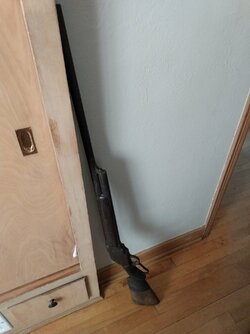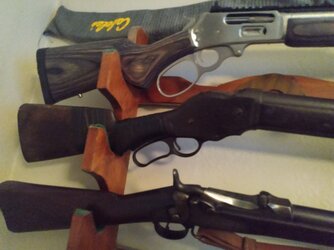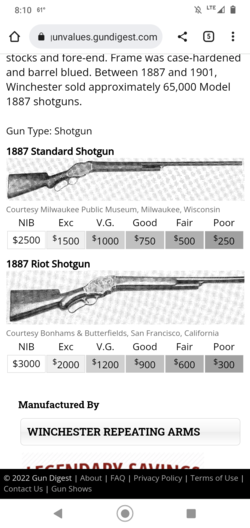So, I was at the antique store this weekend and the guy I buy all my woodworking tools from pulled me in the back and showed me an 1887 Winchester shotgun. The stock is cracked and taped together with what looks like old electrical tape and the bluing is wore and there is surface rust in some parts but everything functions as it should and the internal parts look ok. It honestly looks like it sat in a barn for 80 years, which I guess is plausible.
Being a sucker for things made before 1900 and a lover of the old west, when he told me he'd sell it to me for $150 I couldn't resist. It's cool just to hold a piece of history like that in my hands.
I know they only made about 65,000 of these between 1887 and 1899.
The serial number is covered up by the tape so I can't date it yet.
I guess I am looking for opinions. Should I take this to a gunsmith and get a quote on repairing the stock and addressing the rust? Is it not even worth doing that because of it's condition? Should I just leave it as is and keep it wiped down with ballistol so it doesn't deteriorate any more than it has? Im not worried about turning a profit on it as I probably won't sell it but I want to make sure whatever I do won't make things worse. I guess thats why I'm leaning towards bringing it to a trusted gunsmith and having them make the call, but I guess I'm interested in others opinions as well.


Being a sucker for things made before 1900 and a lover of the old west, when he told me he'd sell it to me for $150 I couldn't resist. It's cool just to hold a piece of history like that in my hands.
I know they only made about 65,000 of these between 1887 and 1899.
The serial number is covered up by the tape so I can't date it yet.
I guess I am looking for opinions. Should I take this to a gunsmith and get a quote on repairing the stock and addressing the rust? Is it not even worth doing that because of it's condition? Should I just leave it as is and keep it wiped down with ballistol so it doesn't deteriorate any more than it has? Im not worried about turning a profit on it as I probably won't sell it but I want to make sure whatever I do won't make things worse. I guess thats why I'm leaning towards bringing it to a trusted gunsmith and having them make the call, but I guess I'm interested in others opinions as well.







